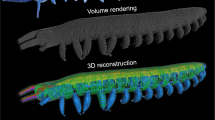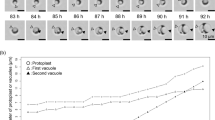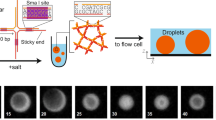Abstract
IT is still not known what causes the passage of fluid from the cytoplasm into the contractile vacuole of a protozoan. In a recently published paper1, Picken has claimed that the rate of this ” infiltration” of fluid into the vacuole will be proportional, among other things, to the difference between the hydrostatic pressure of the cytoplasm (which is maintained by tension on the pellicle) and the colloid osmotic pressure of the cytoplasm, the former tending to produce infiltration and the latter to prevent it. The system which Picken has envisaged appears to resemble the excretory mechanism of vertebrates and possibly of certain higher invertebrates, in which fluid is filtered, from blood vessels under pressure from the heart through colloid-retaining membranes (for example, the glomerulus) into renal tubules.
This is a preview of subscription content, access via your institution
Access options
Subscribe to this journal
Receive 51 print issues and online access
$199.00 per year
only $3.90 per issue
Buy this article
- Purchase on Springer Link
- Instant access to full article PDF
Prices may be subject to local taxes which are calculated during checkout
Similar content being viewed by others
References
Picken, L. E. R., J. Exp. Biol., 13, 387 (1936).
Kitching, J. A., J. Exp. Biol., 11, 364 (1934).
Kitching, J. A., J. Exp. Biol., 13, 11 (1936).
Author information
Authors and Affiliations
Rights and permissions
About this article
Cite this article
KITCHING, J. Mechanism of the Diastole of Contractile Vacuoles. Nature 139, 70–71 (1937). https://doi.org/10.1038/139070c0
Issue Date:
DOI: https://doi.org/10.1038/139070c0
Comments
By submitting a comment you agree to abide by our Terms and Community Guidelines. If you find something abusive or that does not comply with our terms or guidelines please flag it as inappropriate.



